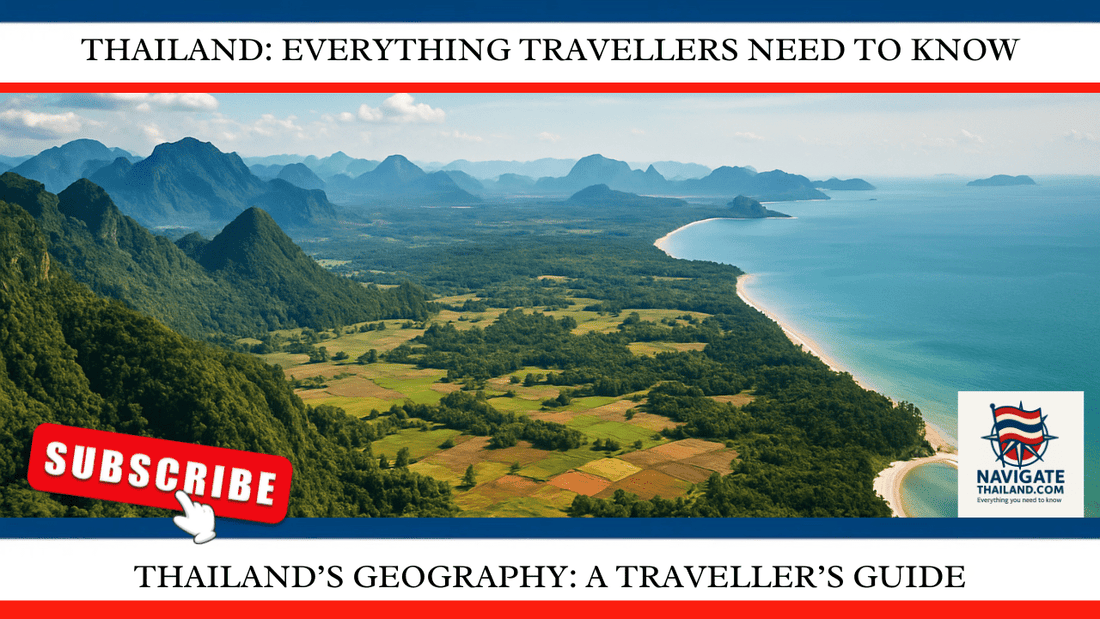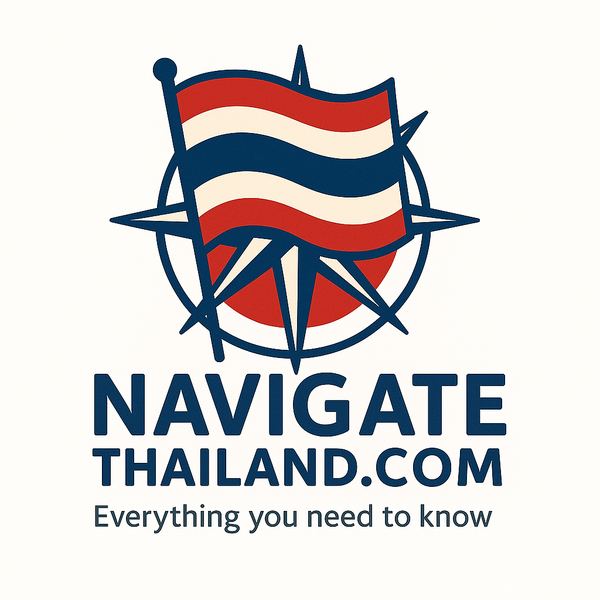
Thailand’s Geography: A Traveller’s Guide from Mountains to Coastlines
Share
Thailand, a country known for its vibrant cities, serene beaches, and rich culture, also boasts one of the most diverse landscapes in Southeast Asia. From misty northern mountain ranges to tropical southern islands, Thailand’s geography plays a vital role in shaping its culture, climate, and travel appeal.
In this guide, we explore the country’s five distinct regions, major rivers, mountains, and coastlines—offering travellers the geographical insight they need to better appreciate the beauty and diversity of the Land of Smiles.
Geographical Overview of Thailand
Located at the centre of mainland Southeast Asia, Thailand shares borders with Myanmar (Burma), Laos, Cambodia, and Malaysia. Its strategic position has historically made it a hub for trade and cultural exchange.
Thailand is typically divided into five major geographical regions:
- The Northern Highlands
- The Northeastern Plateau (Isaan)
- The Central Plains
- The Eastern Gulf Coast
- The Southern Peninsula
Each region offers travellers a unique experience—from jungle trekking and hill tribes to island-hopping and beach resorts.
Fun Fact: Thailand was known as Siam until 1939. The name “Thailand” means “Land of the Free”—the only Southeast Asian country never colonised by a European power.
1. The Northern Highlands – Chiang Mai and Beyond
Northern Thailand is mountainous and cooler than the rest of the country. This region is home to Doi Inthanon, Thailand’s highest peak at 2,565 metres, and part of the greater Himalayan foothills.
Covered in lush forest and national parks, the north is ideal for hiking, visiting remote hill tribes, exploring ancient temples, and enjoying a cooler climate during the dry season (November–February). Major cities like Chiang Mai and Chiang Rai offer a blend of cultural heritage and outdoor adventure.
Fun Fact: Doi Inthanon National Park is nicknamed “The Roof of Thailand” and features cascading waterfalls, rare bird species, and panoramic viewpoints.
2. The Northeastern Plateau – The Isaan Region
Covering nearly a third of Thailand’s land area, the Isaan region is made up of the Korat Plateau. It’s bordered by the Mekong River and features gently rolling plains.
Though often overlooked by tourists, Isaan is considered Thailand’s cultural heartland. It’s famous for its authentic cuisine (like som tum and sticky rice), warm hospitality, and ancient Khmer ruins. The plateau is ideal for travellers seeking off-the-beaten-path experiences.
Major rivers like the Chi and Mun nourish the rice paddies that dominate this region.
3. The Central Plains – Bangkok and the Chao Phraya River
Known as the “Rice Bowl of Asia,” Central Thailand features fertile lowlands crisscrossed by rivers, especially the Chao Phraya River. This region is the country’s agricultural and economic hub.
Bangkok, Thailand’s capital, lies at the mouth of the Chao Phraya River and combines skyscrapers with centuries-old temples. Just north of Bangkok is Ayutthaya, a UNESCO-listed ancient capital filled with ruins and history.
The central region is also home to floating markets, canal tours, and an extensive railway network that makes travel across the country accessible.
Fun Fact: The Chao Phraya River is often called “The Lifeblood of Thailand” because of its importance for irrigation, transport, and trade.
4. The Eastern Gulf Coast – Pattaya to Koh Chang
This coastal region includes the resort city of Pattaya and the island of Koh Chang. With calm seas and beaches, it offers a convenient escape from Bangkok. The eastern seaboard also supports Thailand’s industrial and shipping industries.
Islands like Koh Samet and Koh Chang are less crowded than the southern hotspots and ideal for laid-back travel, hiking, and snorkelling.
5. The Southern Peninsula – Between Two Seas
Southern Thailand stretches down the Malay Peninsula, bordered by the Andaman Sea to the west and the Gulf of Thailand to the east. This region is home to famous destinations like Phuket, Krabi, Koh Samui, and Koh Tao.
The Andaman side is known for its dramatic limestone cliffs, vibrant marine life, and turquoise waters—ideal for diving, rock climbing, and luxury getaways. The Gulf side is more sheltered and ideal for budget travel and yoga retreats.
Fun Fact: The Isthmus of Kra is the narrowest part of southern Thailand and has long been considered for a mega canal project to link the Indian and Pacific Oceans—similar to the Panama Canal, though the plan remains unrealised.
Major Rivers of Thailand
Mekong River
Thailand’s natural border with Laos, the Mekong is one of the world’s great rivers. It supports agriculture, fishing, and river tourism. Key destinations include Nong Khai and Nakhon Phanom.
River Kwai (Mae Klong)
Located in Kanchanaburi province, this river is steeped in WWII history. The famous Bridge over the River Kwai and the Death Railway draw visitors from around the world.
Thailand’s Coastlines and Islands
With over 3,200 kilometres of coastline, Thailand boasts two tropical seas: the Gulf of Thailand and the Andaman Sea.
Gulf of Thailand
- Home to Koh Samui, Koh Phangan, and Koh Tao
- Known for calmer waters and year-round travel options
- Famous for diving, particularly around Koh Tao
Andaman Sea
- Includes Phuket, Krabi, Koh Phi Phi, and the Similan Islands
- Dramatic cliffs, clear waters, and world-class diving
- Better diving visibility from November to April
Fun Fact: Koh Tao certifies more scuba divers annually than any other place in the world—making it one of the top destinations globally for beginner divers.
Conclusion: Explore Thailand’s Diverse Landscapes
Thailand’s diverse geography means there’s something for every traveller—from mountain retreats in Chiang Mai to jungle-cloaked ruins in Isaan, and from vibrant cities like Bangkok to postcard-perfect beaches in the south.
Understanding the lay of the land helps you travel smarter and deeper. So whether you’re chasing waterfalls, sailing island to island, or taking a train through rice paddies—Thailand’s geography is the real adventure.
Have a favourite region in Thailand? Drop your travel story in the comments below, and don’t forget to share this blog with your friends. Subscribe to our YouTube channel, where we turn these guides into immersive travel videos.
References:
• National Geographic – “Southeast Asia’s Natural Landscapes”
• Bangkok Post – “Thailand’s Natural Landmarks and Climate Zones”
• Thailand Meteorological Department – Regional Climate Data (2025)
Read more of our Thailand blog series:
Thai Food Guide:Traditional Recipes and Street Eats
Everything Travellers Need to know
Thailand travel ebooks and language guides
Thailand Travel Apparel & Souvenir Gifts
Subscribe to our YouTube channel Navigate Thailand to see our most popular Thailand travel blogs turned into videos:
Navigate Thailand YouTube channel










































































































































